085 CD / Johannes Brahms. Piano Trios Vol. 2
Abegg Trio Series Vol. XIII
Johannes Brahms
Piano Trios Vol. 2
Piano Trio no. 1 in B major op. 8 (New version, 1889)
Piano Trio no. 3 in C minor op. 101 (1866)
Abegg Trio
EAN/barcode: 4009850008507
Description
Twice Brahms worked on his first piano trio [op. 8]: in 1854, when he put it to paper [...] and 1889, when he worked on it again and thoroughly revised it. [...] Both versions have their merit and, more importantly still, their own specific musical charm. This applies particularly to the finely chiselled interpretations by the Abegg Trio [...]. (Fono Forum)
5 reviews for 085 CD / Johannes Brahms. Piano Trios Vol. 2
You must be logged in to post a review.

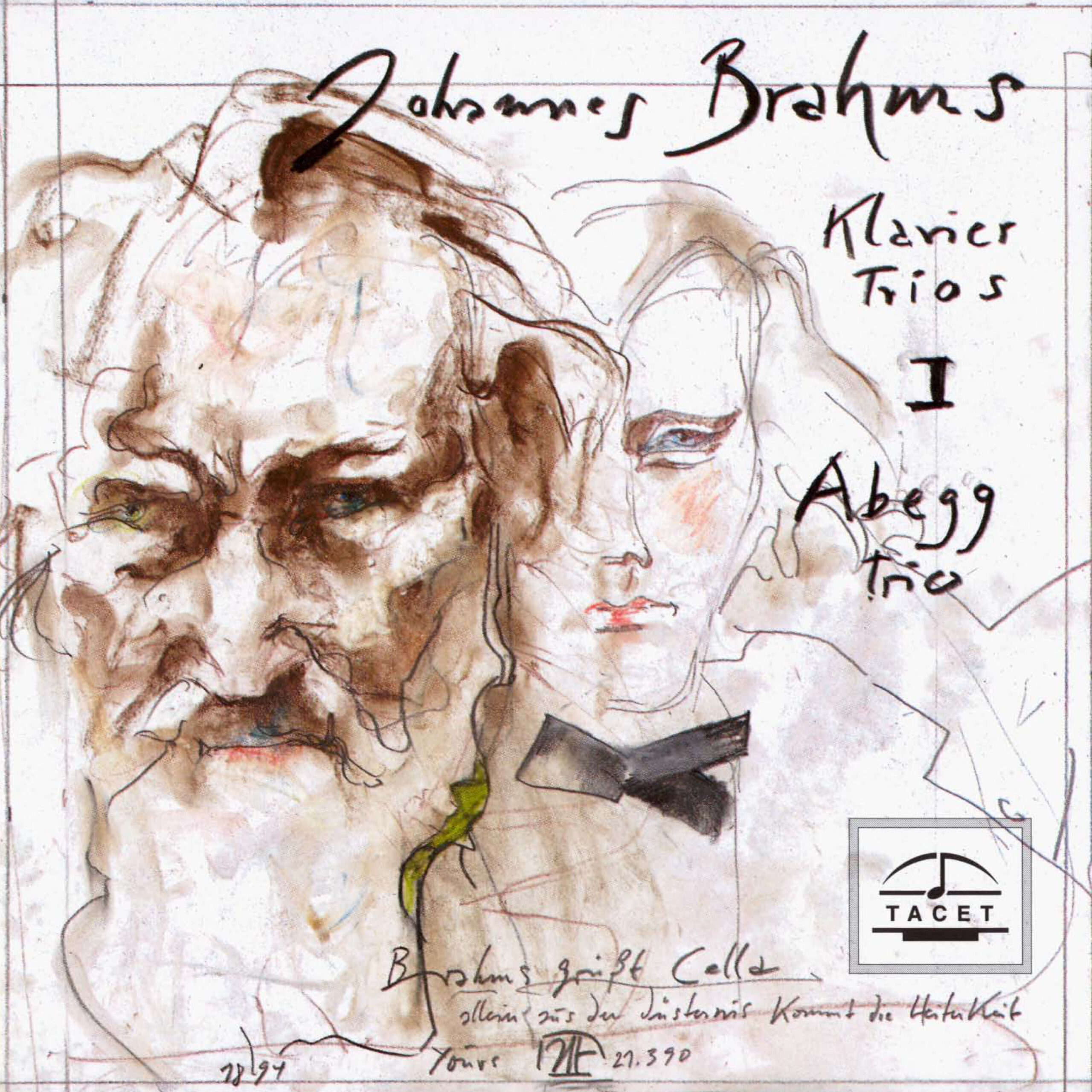

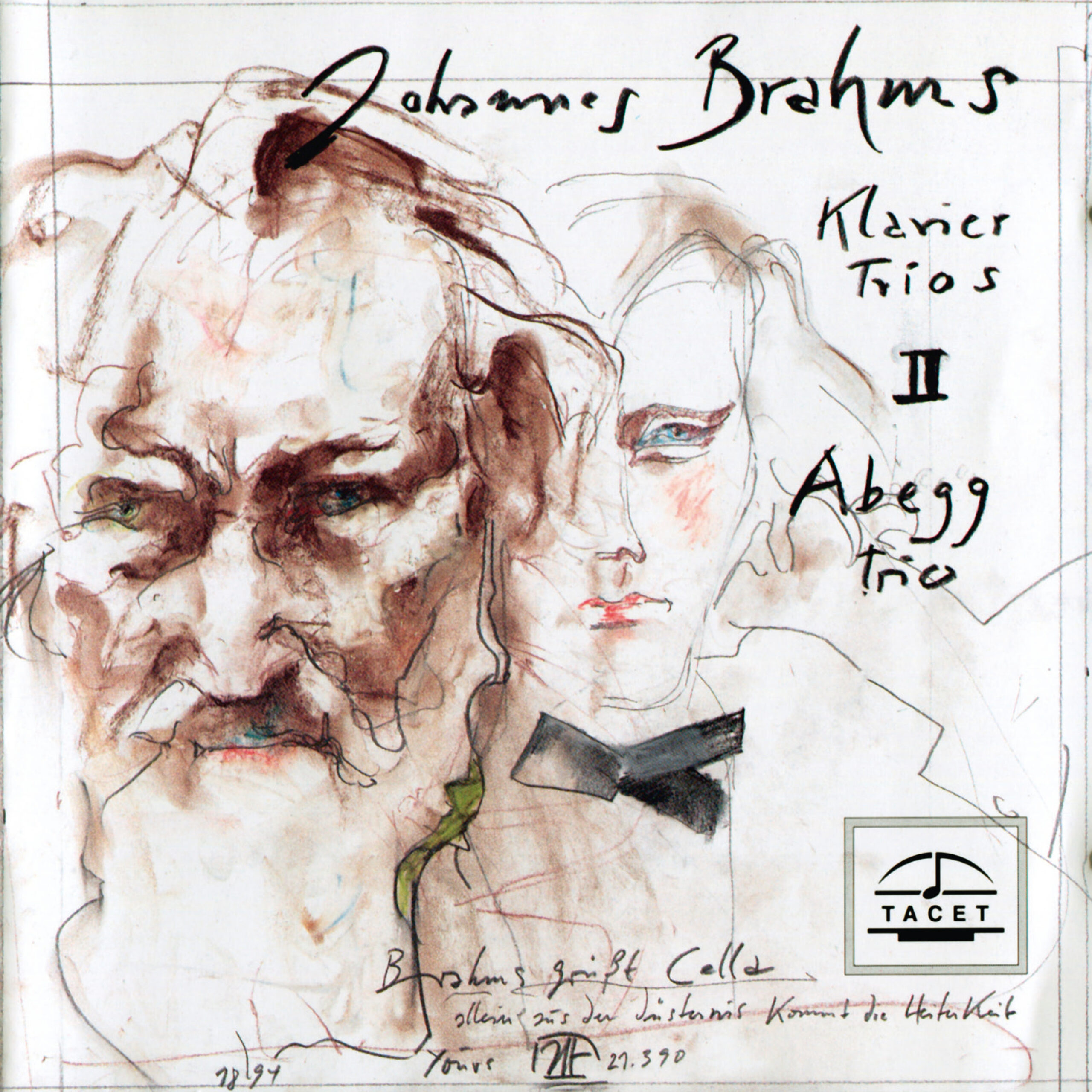
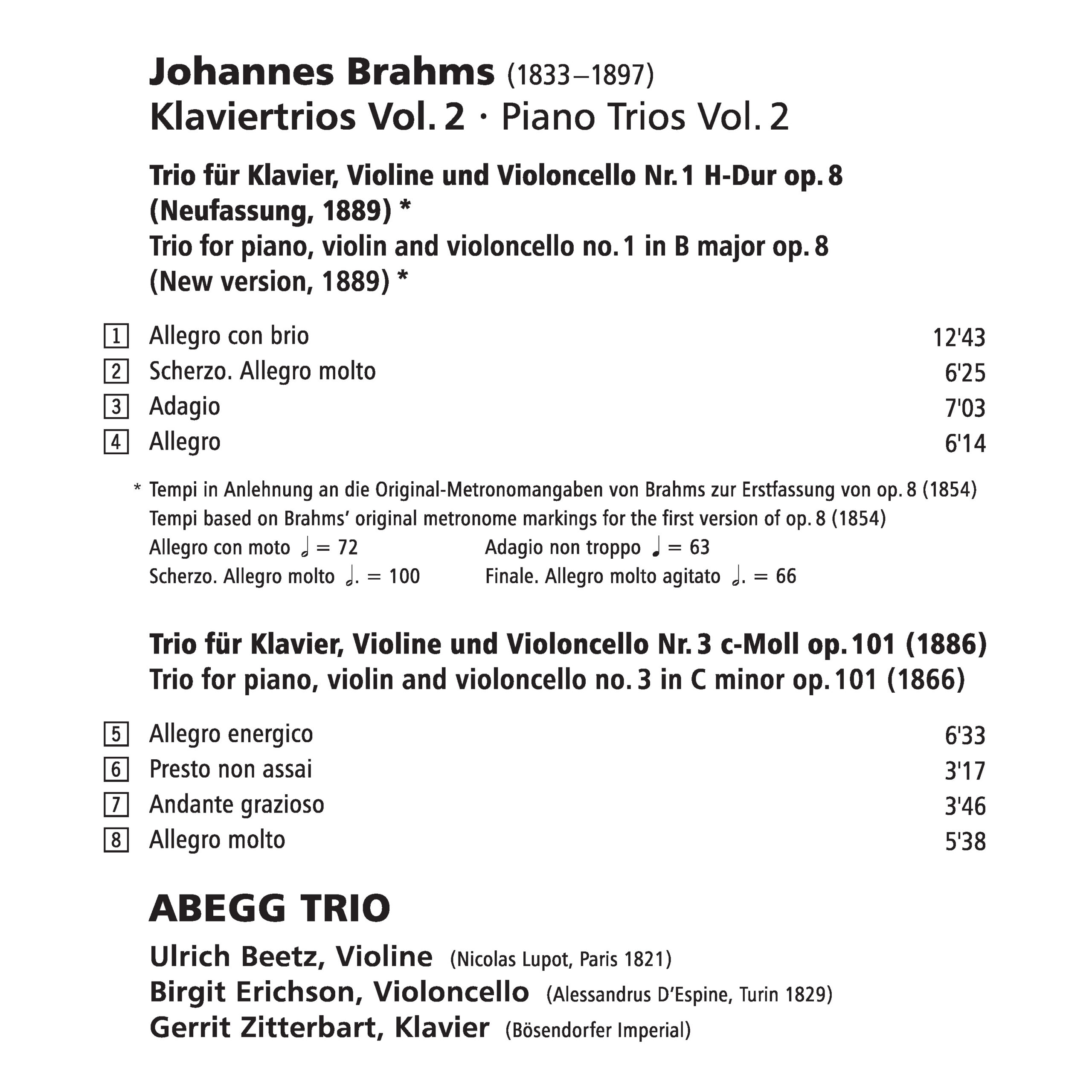
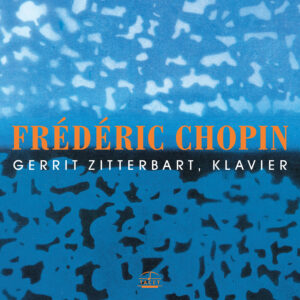
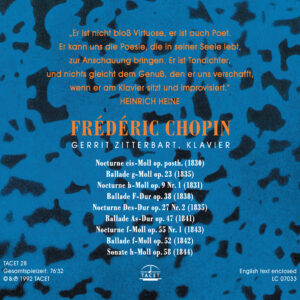
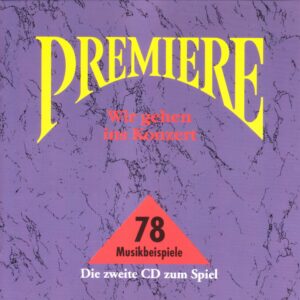
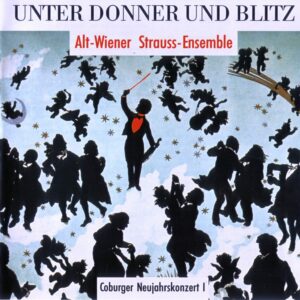
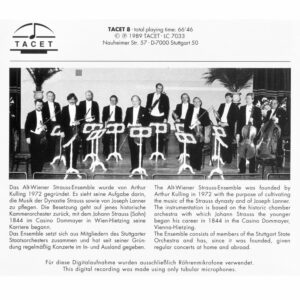
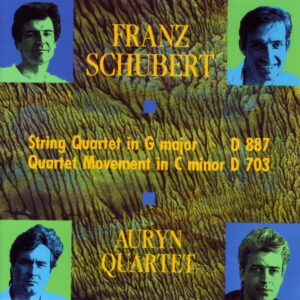
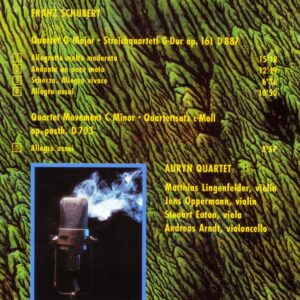
Fono Forum –
"Kreisler the Younger" vs. "Brahms the Elder"—this is how one might contrast the two CDs (TACET 84 / TACET 85), at least as far as Opus 8 is concerned. Brahms, after all, engaged with his First Piano Trio twice: in 1854, when he first committed it to paper (following his early piano and song compositions, Op. 1 to 7, this was his first chamber work), and again in 1889, when he fundamentally revised it (this revision, his final work on a chamber piece, was followed by the late piano works, Op. 116 to 119, and the Four Serious Songs). It is striking how Brahms’ various creative circles—piano music, chamber music, and songwriting—each close individually, or, as Brahms himself put it, how "the snake bites its own tail."
With the signature "Kreisler jun.", Brahms marked the first version of Op. 8, referencing the very Kreisler whom Schumann immortalized in his Kreisleriana. A tumultuous, overflowing musical flow that seems to sweep everything along—or, rather, one that the composer initially struggled to give form. Hence the need for revision, for taming the youthful exuberance of his early work. Both versions have their justification and, more importantly, their own unique musical charm—especially in the exquisitely refined interpretations of the Abegg Trio, which does not hastily conform to a traditional image of Brahms (Brahms with a beard, aged even in his youth), but fully embraces the "Kreislerian" urgency and impetuosity in its interpretation.
Special praise is due to Jan Reichow for the two highly interesting and well-formulated essays in the booklet.
Werner Pfister
Hifi Vision –
If there is one work that serves as a bracket encompassing the entire life of Johannes Brahms, it is his First Piano Trio: He wrote it at the age of 20 as Opus 8 and revised it at 56, just a few years before his death. "It won’t be as wild as it used to be," he wrote to Clara Schumann at the time, "but whether it will be better?" Beautiful and good it certainly is—Brahms at his most romantic and lush, Brahms at his best. The three musicians of the Abegg Trio perform it with pronounced intensity and stormy passion—"wild" where it needs to be, and transfigured where it may be. But my favorite part is played by Birgit Erichson on the cello. She lends the music the warmth and depth that define the listening experience of this recording.
Wolfgang Lechner
Audio –
Just as Horst Janssen’s Doppelkopf drawing on the booklet cover, the Abegg Trio brings together both the youthfully impetuous and the wisely mature Brahms under one roof. After 15 years in the business, the trio’s interpretations thrive on a uniquely homogeneous blend of fiery spontaneity and classically concentrated balance. This is no cozy, harmless Brahms—far from it. The tempos of the B-major Trio, Op. 8 (later ruthlessly cut by a third by the composer himself) move along far more briskly than in the previously available Abegg recording, adhering to the original metronome markings of the first version. The Abegg Trio thus creates even greater inner tension than the somewhat sticky, lingering interpretation by the Trio Fontenay (Teldec). Primordially vital and rugged at one extreme, blissfully lyrical and intoxicating at the other—this is not for purists who just want to lean back comfortably and sigh, "How wonderful!" Every bar grips the listener, and the grand compositional arcs are perfectly balanced. The trio delivers a stylistically fascinating and remarkably precise chamber music performance in excellent sound quality.
Otto Paul Burkhardt
Fanfare-Magazin –
With some other chamber-music discs reviewed in Fanfare 22:6, the German label Tacet drew some warm recommendation from my colleague James H. North for its recorded sound. A similar enthusiasm is certainly called for here: One of the first things that struck me about this pair of releases is the exemplary warmth, clarity, colour, and balance achieved ... by producers Andreas Spreer and Peter Laenger. Striking another way is the curious fact that these recordings have apparently had to wait roughly a decade to be issued. At least, having been taped in 1989 and 1990, they appear now labeled with a 1999 p date, and I can find no trace of any earlier release. What makes this incomprehensible is the outstanding quality of the performances. They could easily have earned an emphatic recommendation at any intervening time, and, even now, after the appearance of the Florestan Trio′s superb set on Hyperion..., they are good enough to complicate the matter of choice substantially...
Bernard Jacobson
Luc Nevers –
The competition is fierce, yet the Abegg Trio demonstrates remarkable rhythmic qualities. The crispness of their attacks is at times slightly too nervous—particularly in the piano—all the more so since the musicians explore the details of these two scores with impetuosity and generosity.
Luc Nevers
_________________________
Original Review in French language:
La concurrence est rude et malgré cela, les Abegg démontrent des qualités rythmiques remarquables. La netteté de leurs attaques est parfois cependant un peu trop nerveuse (piano), d′autant plus que les musiciens fouillent les détails de ces deux partitions avec impétuosité et générosité.
Luc Nevers